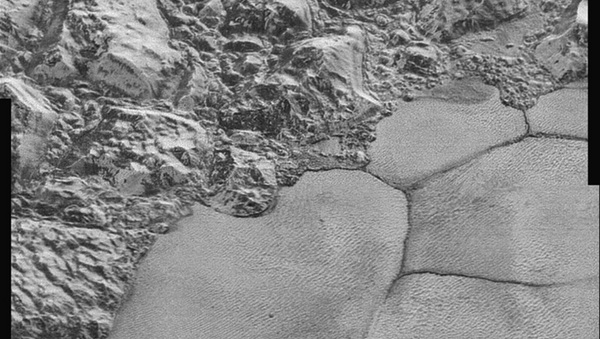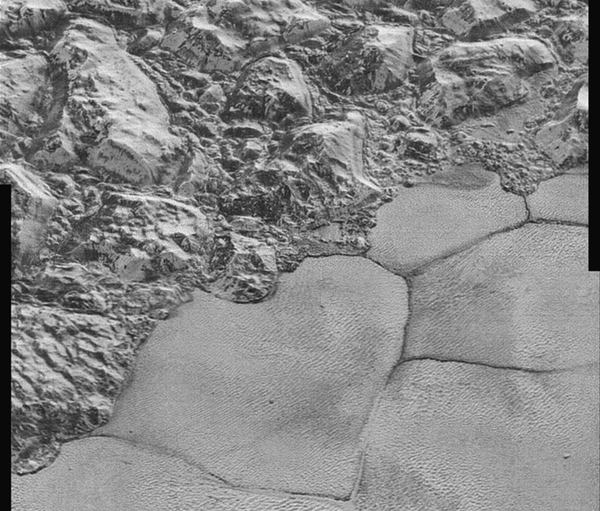Built to capture photos of Pluto, New Horizons is currently working overtime. Launched in 2006 with a primary mission length of 9.5 years, the probe is still beaming back of photos of the distant dwarf planet.
NASA has released a new batch of images taken during a flyby last July that scientists have only now properly formatted. The high-resolution photographs provide an extremely close glimpse of what astronomers are considering to be an extremely strange celestial body.
"This new image product is just magnetic," Alan Stern, New Horizons principal investigator with the Southwest Research Institute, said in a statement. "It makes me want to go back on another mission to Pluto and get high-resolution images like these across the entire surface."
The images were taken from a distance of roughly 9,850 miles.
"Starting with hummocky, cratered uplands at top, the view crosses over parallel ridges of 'washboard' terrain, chaotic and angular mountain ranges, cellular plains, coarsely 'pitted' areas of sublimating nitrogen ice, zones of thin nitrogen ice draped over the topography below and dark mountainous highlands scarred by deep pits," NASA officials wrote.
Astronomers have been aware of Pluto’s surprisingly unique terrain. Earlier photographs snapped by New Horizons provided details of the Tartarus Dorsa, a rise informally known as the "snakeskin" mountains because of their scale-like texture.
"It looks more like tree bark or dragon scales than geology," project scientist William McKinnon said in a statement released September 2015. "This’ll really take time to figure out; maybe it’s some combination of internal tectonic forces and ice sublimation drive by Pluto’s faint sunlight."
The dwarf planet also houses a large amount of methane, which scientists cannot explain.
Entering its teen years, New Horizons will continue out into space. Having achieved its goal with excellent results, the NASA probe is on its way to the Kuiper belt, where it will perform a flyby of an object known as 2014 MU69.
Roughly one billion miles beyond Pluto, this object shouldn’t expect its own closeup before January of 2019.




